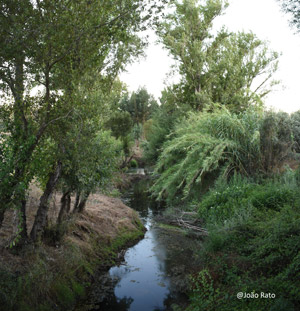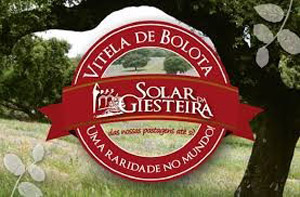Sítio de Monfurado, Portugal
 The living Montado
The tree layer of the Montado
Cork harvest
Extensive livestock production
Riparian corridors and Mediterranean temporary ponds
Annual grasslands
Cultural heritage
Small scale mosaic and traditional olive groves
Low soil fertility
Lack of new oak trees
Undifferentiated products
Resistance to multifunctionality
Economic agenda supporting productivism and specialization farming
Lack of investment in improving management practices
Lack of clear stewardship
Healthy soil as the core of the Montado
Locally adapted agri-environmental measures
Independent projects
Mobile poultry
Acorn as food for humans - a retro innovation
Montado targeted hybrid Agri Environmental scheme
The living Montado
The tree layer of the Montado
Cork harvest
Extensive livestock production
Riparian corridors and Mediterranean temporary ponds
Annual grasslands
Cultural heritage
Small scale mosaic and traditional olive groves
Low soil fertility
Lack of new oak trees
Undifferentiated products
Resistance to multifunctionality
Economic agenda supporting productivism and specialization farming
Lack of investment in improving management practices
Lack of clear stewardship
Healthy soil as the core of the Montado
Locally adapted agri-environmental measures
Independent projects
Mobile poultry
Acorn as food for humans - a retro innovation
Montado targeted hybrid Agri Environmental scheme

The Montado (habitat 6310) is a human shaped agro-sylvo-pastoral system with multiple interrelated components. Farming and conservation are deeply interdependent, with the good status of natural and semi-natural habitats directly dependent on extensive grazing and multifunctional management suitable for the resources of the Montados.

The Quercus trees are the most outstanding characteristic of Montados. The LA has an open tree layer composed mostly of cork oaks (Q. suber) but also Q. rotundifolia and Q. pyrenaica. Oak tree regeneration is a crucial issue for the continuity of the Montado.

The main product from Quercus suber is the cork. Cork is hand harvested by skilful workers. Harvesting is done every nine years after trees reach maturity (25 years old). Wood and charcoal are by-products of Quercus and still have a relevant role in the local economy.

Extensive cattle production is a very important economic activity that has increased in the last decades while sheep and goats, better adapted to the system, have decreased sharply. Free range Alentejano pig fattening and hunting are also common. The livestock benefit from shelter provided by the Quercus and contributes to shrub control and pasture fertility.

Dense and highly diverse riparian corridors (habitats 91E0*, 92A0, 91B0) occur along the main streams crossing the LA. The presence of water for a large part of the year defines remarkable linear elements in the landscape. Temporary ponds (3170*), where conservation is directly related to extensive grazing, also occur.

The good status of these habitats, including priority habitat 6220*, is dependent on extensive grazing activity. Some flora species of high conservation interest, such as Hyacinthoides vicentina, Festuca duriotagana and Hamilium verticillatum, also occur in the LA.

The LA maintains an important historical heritage which includes relevant paleolithic and neolithic edifications (eg. Almendres Cromlech), including a cave (escoural) which is the only grotto in Portugal with Upper Paleolithic rock art. Churches, chapels, fountains, and housing all demonstrate the presence of human communities over the centuries.

Village surroundings consist of a mosaic of traditional olive groves, fruit orchards, vegetable gardens and pastures. This mosaic contrasts with the vast Montado and is the everyday landscape of the resident population. The contrasts in the landscape favour heterogeneity in the patterns and, thus, biodiversity.

The naturally low soil fertility in Montado is aggravated by inappropriate soil management practices, including mechanization technologies and deficient nutrient management, which result in very low soil organic matter and unbalanced nutrient availability. Suitable pasture management is essential to restoration and for improving soil fertility.

Intensification of activities in the understory, such as mechanized ploughing and overgrazing, hinders natural regeneration of the trees and creates both homogeneous stands and “clear areas” which ultimately will induce decline of the Montado.

Markets for cork and livestock are well established. However, no distinctive brand exists for the LA. Few farmers sell meat under their own brand. Potential value-added products such as aromatics, honey, mushrooms and various services could be integrated in farm business models to enhance resilience.

Most of the farm area within the LA is under management defined by conventional extensive and specialized agribusiness production models. They are mostly monofunctional and focused on livestock rearing and/or cork production.

Farmers’ decision-making was previously focused on resilience through adaptation to internal conditions. Now, management decision-making mainly focuses on external European and national policy factors. CAP coupled livestock payments are seen as the main cause of this change.
The individualistic nature of farm managers in the Montado results from a traditional social structure with generally conservative lifestyles and skeptical attitudes toward innovators.

There is a lack of clear stewardship to be able to combine and integrate different interests, including economic activities, and to explore potentialities that would promote the maintenance of the HNV Montado. There is also an urgent need to overcome the generally poor flexibility of institutional arrangements.

The soil group is an informal group of farmers and a scientist with agronomic knowledge and willingness to share and apply it to the field conditions of Alentejo. The knowledge shared and applied within the group is resulting in improvement of the agronomic and economic sustainability of the farms.

Locally tailored agri-environmental scheme (vertical measures) are supporting agricultural practices compatible with the conservation and recovery of endangered cereal steppe birds. The existence of a charismatic species -the great bustard - was very relevant for creating public awareness and engage different stakeholders.

Autonomous but complementary projects strengthen the farm system as a whole. A farm estate houses small independent projects under defined rules - agroecology principles. The independent projects are mostly complementary to the host’s own production system.

A project was created to develop a mobile poultry processing unit to service small-scale producers. The project focuses on adapting the concept of a mobile processing unit for compliance with national legislation while meeting the needs of producers and consumers. The project consortium has submitted the project for approval by authorities - PDR2020 (Portuguese Rural development program).

The acorn week is used to create awareness amongst locals and visitors of the value of acorns as food for humans rather than exclusively as feed for animals. Schools are involved, and there are animation events such as cooking demonstration, exhibition of products, and walking trails involving different actors.

Together with farmers and regional and national authorities, the HNV-Link team is building for the Montado of Sítio de Monfurado a draft program of results and action based agri-environment measures inspired by The Burren Programme.
The Learning Area (LA) of Sítio de Monfurado is a Natura 2000 site at the Central Alentejo Region. The landscape character is closely related to the dominant dense Montado, managed extensively in large farm estates, and it is generally a High Nature Value farming system. The Montado is a human shaped ecosystem composed of complementary elements and activities. The open tree cover (Quercus rotundifolia and Quercus suber) provides wood, cork and shelter for the livestock grazing underneath. The undercover is composed of pastures combined with shrubs in varied densities. There are also highly diverse riparian corridors and some Mediterranean temporary ponds. Additionally, smaller areas of small-scale mosaic and traditional olive groves surround the villages.
For more information on the area, see the Baseline Assessment
Innovations in Sítio de Monfurado:
- Healthy soil as the core of the Montado
- Portugal Independent projects The case of Herdade do Freixo do Meio
- Mobile poultry
- Acorn as food for humans retro innovation
- Montado targeted hybrid Agri Environmental scheme
Innovations of relevance to Sítio de Monfurado from other areas:
- Ireland: The Burren Programme A locally targeted hybrid AES
- Ireland: Burrenbeo Trust community
- Ireland: BurrenLIFE: co-creating solutions to HNV farming and conservation challenges
- Spain: Building dialogue
- Sweden: Mobile abattoir
Other Downloads:
Contact person: Maria Isabel Ferraz de Oliveira (mifo@uevora.pt) - Institute of Mediterranean Agricultural and Environmental Sciences (ICAAM), University of Évora
(August 2018)

